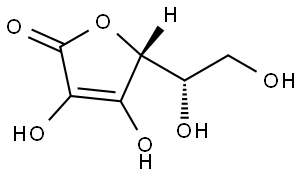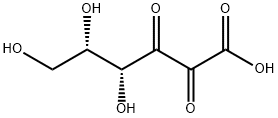Ascorbic Acid
- CAS No.
- 50-81-7
- Chemical Name:
- Ascorbic Acid
- Synonyms
- ASCORBIC ACID;VITAMIN C;L-ASCORBIC ACID;Ascorbate;ascorbic;L-ASCORBATE;(R)-5-((S)-1,2-Dihydroxyethyl)-3,4-dihydroxyfuran-2(5H)-one;ASCOBIC ACID;3-Keto-L-gulofuranolactone;Ascorb
- CBNumber:
- CB7853704
- Molecular Formula:
- C6H8O6
Lewis structure
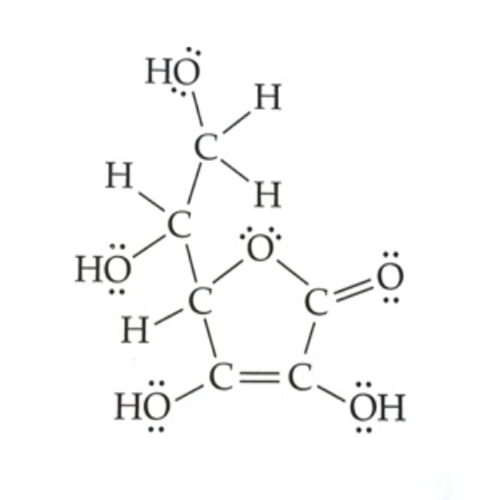
- Molecular Weight:
- 176.12
- MDL Number:
- MFCD03457784
- MOL File:
- 50-81-7.mol
- MSDS File:
- SDS
| Melting point | 190-194 °C (dec.) |
|---|---|
| alpha | 20.5 º (c=10,H2O) |
| Boiling point | 227.71°C (rough estimate) |
| Density | 1,65 g/cm3 |
| FEMA | 2109 | ASCORBIC ACID |
| refractive index | 21 ° (C=10, H2O) |
| storage temp. | Store at +5°C to +30°C. |
| solubility | H2O: 50 mg/mL at 20 °C, clear, nearly colorless |
| form | powder |
| pka | 4.04, 11.7(at 25℃) |
| color | white to slightly yellow |
| PH | 3.59(1 mM solution);3.04(10 mM solution);2.53(100 mM solution); |
| Odor | Odorless |
| PH Range | 1 - 2.5 |
| optical activity | [α]25/D 19.0 to 23.0°, c = 10% in H2O |
| Odor Type | green |
| Water Solubility | 333 g/L (20 ºC) |
| Merck | 14,830 |
| BRN | 84272 |
| BCS Class | 1 |
| Stability | Stable. May be weakly light or air sensitive. Incompatible with oxidizing agents, alkalies, iron, copper. |
| InChIKey | CIWBSHSKHKDKBQ-JLAZNSOCSA-N |
| LogP | -1.85 |
| Substances Added to Food (formerly EAFUS) | ASCORBIC ACID |
| SCOGS (Select Committee on GRAS Substances) | L-Ascorbic acid |
| FDA 21 CFR | 101.9; 104.20; 310.545 |
| CAS DataBase Reference | 50-81-7(CAS DataBase Reference) |
| NCI Dictionary of Cancer Terms | ascorbic acid; vitamin C |
| FDA UNII | PQ6CK8PD0R |
| NCI Drug Dictionary | ascorbic acid |
| ATC code | G01AD03,S01XA15 |
| NIST Chemistry Reference | L-Ascorbic acid(50-81-7) |
| EPA Substance Registry System | Ascorbic acid (50-81-7) |
| Cosmetics Info | Ascorbic Acid |
SAFETY
Risk and Safety Statements
| Symbol(GHS) |   GHS02,GHS07 |
|||||||||
|---|---|---|---|---|---|---|---|---|---|---|
| Signal word | Warning | |||||||||
| Hazard statements | H226-H319 | |||||||||
| Precautionary statements | P210-P305+P351+P338-P370+P378 | |||||||||
| Hazard Codes | ||||||||||
| Risk Statements | ||||||||||
| Safety Statements | 24/25-36-26 | |||||||||
| WGK Germany | 1 | |||||||||
| RTECS | CI7650000 | |||||||||
| TSCA | Yes | |||||||||
| HS Code | 29362700 | |||||||||
| Toxicity | LD50 oral in rat: 11900mg/kg | |||||||||
| NFPA 704 |
|
Ascorbic Acid price More Price(135)
| Manufacturer | Product number | Product description | CAS number | Packaging | Price | Updated | Buy |
|---|---|---|---|---|---|---|---|
| Sigma-Aldrich | V-038 | L-Ascorbic acid solution 1.0?mg/mLinacetonitrile:water,certifiedreferencematerial,Cerilliant? | 50-81-7 | 1mL | $82.5 | 2024-03-01 | Buy |
| Sigma-Aldrich | SAB2100872 | Anti-GAA antibody produced in rabbit affinity isolated antibody | 50-81-7 | 100μL | $524 | 2024-03-01 | Buy |
| Sigma-Aldrich | HPA029126 | Anti-GAA antibody produced in rabbit Prestige Antibodies? Powered by Atlas Antibodies, affinity isolated antibody, buffered aqueous glycerol solution | 50-81-7 | 100μL | $547 | 2024-03-01 | Buy |
| Sigma-Aldrich | HPA026970 | Anti-GAA antibody produced in rabbit Prestige Antibodies? Powered by Atlas Antibodies, affinity isolated antibody, buffered aqueous glycerol solution | 50-81-7 | 100μL | $547 | 2024-03-01 | Buy |
| Sigma-Aldrich | AX1775 | Ascorbic Acid Meets ACS Specifications GR ACS | 50-81-7 | 100g | $151 | 2024-03-01 | Buy |
Ascorbic Acid Chemical Properties,Uses,Production
Description
Ascorbic acid, a water-soluble dietary supplement, is consumed by humans more than any other supplement. The name ascorbic means antiscurvy and denotes the ability of ascorbic to combat this disease. Vitamin C is the l-enantiomer of ascorbic acid. Ascorbic acid deficiency in humans results in the body’s inability to synthesize collagen, which is the most abundant protein in vertebrates.
Description
L-
Chemical Properties
White crystals (plates or needles). Soluble in water; slightly soluble in alcohol; insoluble in ether, chloroform, benzene, petroleum ether, oils and fats. Stable to air when dry. One international unit is equivalent to 0.05 milligram of l-ascorbic acid.
Physical properties
Appearance: white crystal or crystalline powder, and it is odorless and flavors sour. The color changes yellowish when exposed in the air for a long time. Its aqueous solution is acidic reaction. Solubility: vitamin C is soluble in water, slightly soluble in ethanol, and insoluble in chloroform or ether. Melting point: 190–192? °C.? It would decompose when it melts. Specific optical rotation: +20.5 to +21.5°. Ascorbic acid is two-base acid (the pKa is 4.1 and 11.8). It occurs mainly in the form of sodium salt and calcium salt, and its aqueous solution is strongly acidic reaction. Ascorbic acid is a strong reducing agent.
Originator
Ascorbic aci,Natur Product,France
History
Vitamin C is a general term for compounds having ascorbic acid activity, including ascorbic acid, dehydroascorbic acid, and its isomers.
The understanding of vitamin C has gone through a long and painful process. Although the relationship between scurvy and stored food is obvious, but the
treatments of this disease have been misguided. By 1601, British armed Captain
James Lancaster discovered the disease on the ship of the East India Company and
regarded the scurvy as “rot,” which could be made tissue alkaline.
At the early stage of the nineteenth century, the understanding and treatment of scurvy had developed to a right approach. The exposition of
scurvy etiology and metabolic theory took more than a century.
By the early stage of the twentieth century, inspired by the animal model of beriberi, researchers in the Christchurch Oslo University discovered one animal that
could suffer scurvy accidentally and then established a valuable scurvy animal
model. This experiment demonstrated that the extract isolated from lemon had antiscurvy activity. Until 1932, many research groups obtained the anti-scurvy crystal
from different plants and identified the crystal as ascorbic acid vitamin C. Next year,
the chemical structure of ascorbic acid was elucidated, and then its artificial synthesis was accomplished.
Uses
vitamin C is a well-known anti-oxidant. Its effect on free-radical formation when topically applied to the skin by means of a cream has not been clearly established. The effectiveness of topical applications has been questioned due to vitamin C’s instability (it reacts with water and degrades). Some forms are said to have better stability in water systems. Synthetic analogues such as magnesium ascorbyl phosphate are among those considered more effective, as they tend to be more stable. When evaluating its ability to fight free-radical damage in light of its synergistic effect with vitamin e, vitamin C shines. As vitamin e reacts with a free radical, it, in turn, is damaged by the free radical it is fighting. Vitamin C comes in to repair the free-radical damage in vitamin e, allowing e to continue with its free-radical scavenging duties. Past research has indicated that high concentrations of topically applied vitamin C are photoprotective, and apparently the vitamin preparation used in these studies resisted soap and water, washing, or rubbing for three days. More current research has indicated that vitamin C does add protection against uVB damage when combined with uVB sunscreen chemicals. This would lead one to conclude that in combination with conventional sunscreen agents, vitamin C may allow for longer-lasting, broader sun protection. Again, the synergy between vitamins C and e can yield even better results, as apparently a combination of both provides very good protection from uVB damage. However, vitamin C appears to be significantly better than e at protecting against uVA damage. A further conclusion is that the combination of vitamins C, e, and sunscreen offers greater protection than the sum of the protection offered by any of the three ingredients acting alone. Vitamin C also acts as a collagen biosynthesis regulator. It is known to control intercellular colloidal substances such as collagen, and when formulated into the proper vehicles, can have a skin-lightening effect. Vitamin C is said to be able to help the body fortify against infectious conditions by strengthening the immune system. There is some evidence (although debated) that vitamin C can pass through the layers of the skin and promote healing in tissue damaged by burns or injury. It is found, therefore, in burn ointments and creams used for abrasions. Vitamin C is also popular in anti-aging products. Current studies indicate possible anti-inflammatory properties as well.
Uses
The starting point for synthesis of vitamin C is the selective of oxidation of the sugar compound D-sorbit to L-sorbose using Acetobacter suboxidans bacteria. L-sorbose is then converted to L-ascorbic acid, better known as vitamin C.
Uses
analgesic, antipyretic
Uses
Sodium, potassium, and calcium salts of ascorbic acids are called ascorbates and are used as food preservatives. To make ascorbic acid fat-soluble, it can be esterified. Esters of ascorbic acid and acids, such as palmitic acid to form ascorbyl palmitate and stearic acid to form ascorbic stearate, are used as antioxidants in food, pharmaceuticals, and cosmetics. Ascorbic acid is also essential in the metabolism of some amino acids. It helps protect cells from free radical damage, helps iron absorption, and is essential for many metabolic processes.
Uses
Physiological antioxidant. Coenzyme for a number of hydroxylation reactions; required for collagen synthesis. Widely distributed in plants and animals. Inadequate intake results in deficiency syndrome s such as scurvy. Used as antimicrobial and antioxidant in foodstuffs.
Uses
antiscorbutic, antiviral
Production Methods
Ascorbic acid is produced synthetically using the Reichstein process, which has been the standard method of production since the 1930s. The process starts with fermentation followed by chemical synthesis. The first step involves reduction of D-glucose at high temperature into D-sorbitol. D-sorbitol undergoes bacterial fermentation, converting it into L-sorbose. L-sorbose is then reacted with acetone in the presence of concentrated sulfuric acid to produce diacetone-L-sorbose, which is then oxidized with chlorine and sodium hydroxide to produce di-acetone-ketogulonic acid (DAKS). DAKS is then esterified with an acid catalyst and organics to give a gulonic acid methylester. The latter is heated and reacted with alcohol to produce crude ascorbic acid, which is then recrystallized to increase its purity. Since the development of the Reichstein process more than 70 years ago, it has undergone many modifications. In the 1960s, a method developed in China referred to as the two-stage fermentation process used a second fermentation stage of L-sorbose to produce a different intermediate than DAKS called KGA (2-keto-L-gulonic acid), which was then converted into ascorbic acid. The two stage process relies less on hazardous chemicals and requires less energy to convert glucose to ascorbic acid.
Definition
ChEBI: L-ascorbic acid is the L-enantiomer of ascorbic acid and conjugate acid of L-ascorbate. It has a role as a coenzyme, a flour treatment agent, a food antioxidant, a plant metabolite, a cofactor, a skin lightening agent and a geroprotector. It is an ascorbic acid and a vitamin C. It is a conjugate acid of a L-ascorbate. It is an enantiomer of a D-ascorbic acid.
Indications
Vitamin C (ascorbic acid) is essential for the maintenance of the ground substance that binds cells together and for the formation and maintenance of collagen.The exact biochemical role it plays in these functions is not known, but it may be related to its ability to act as an oxidation–reduction system.
Manufacturing Process
D-Glucose was reduced to the D-sorbitol with a hydrogen over Ni Raney, then it was turned into the L-sorbose with the acetobacter suboxydans and the hydroxyl groups of L-sorbose were protected with acetone treatment yielded the diaceton-L-sorbose. Subsequent treatment with NaOCl/Raney Ni produced di-O-isopropylidene-2-oxo-L-gulonic acid. Partial hydrolysis with aqueous HCl gave deprotected 2-oxo-L-gulonic acid, which yielded ascorbinic acid by heating with HCl.
brand name
Ascorbin (Marion Merrell Dow).
Therapeutic Function
Vitamin
General Description
Scurvy (from the French word scorbutus) has been recognized as a disease afflicting mankind for thousands of years. Citrus fruits such as oranges, lemons, and limes were later identified as equally effective treatments. Only within the last 100 years has a deficiency in vitamin C been definitively identified as the cause of scurvy. In 1932, Waugh and King isolated crystalline vitamin C from lemon juice and showed it to be the antiscorbutic factor present in each of these treatments.
The structure and chemical formula of vitamin C was identified in 1933 by Hirst et al.Because humans are one of the few animal species that cannot synthesize vitamin C, it has to be available as a dietary component. Dietary sources of ascorbic acid include fruits (especially citrus fruits), vegetables (especially peppers), and potatoes. Although the sources of some commercial products are rose hips and citrus fruits, most ascorbic acid is prepared synthetically.
Vitamin C is now commonly referred to as ascorbic acid because of its acidic character and its effectiveness in the treatment and prevention of scorbutus (scurvy). The acidic character is because of the two enolic hydroxyls; the C3 hydroxyl has a pKa value of 4.1, and the C2 hydroxyl has a pKa of 11.6. All biological activities reside in L-ascorbic acid; therefore, all references to vitamin C, ascorbic acid, ascorbate, and their derivatives refer to this form. The monobasic sodium salt is the usual salt form.
General Description
White to very pale yellow crystalline powder with a pleasant sharp acidic taste. Almost odorless.
Air & Water Reactions
May be sensitive to prolonged exposure to air and light. Sensitive to moisture. Soluble in water. Aqueous solutions are oxidized by air in a reaction that is accelerated by alkalis, iron and copper. The rate depends on the pH and on oxygen concentration. Also subject to degradation under anaerobic conditions.
Reactivity Profile
L(+)-Ascorbic acid is a lactone. Reacts as a relatively strong reducing agent and decolorizes many dyes. Forms stable metal salts. Incompatible with oxidizers, dyes, alkalis, iron and copper. Also incompatible with ferric salts and salts of heavy metals, particularly copper, zinc and manganese .
Fire Hazard
Flash point data for L(+)-Ascorbic acid are not available; however, L(+)-Ascorbic acid is probably combustible.
Biochem/physiol Actions
L-ascorbic acid mainly exhibits antioxidant properties. It protects plants from oxidative stress and mammals from diseases associated with oxidative stress. L-ascorbic acid mainly protects from hydroxyl radicals, superoxide and singlet oxygen. In addition, it also reduces the membrane-linked antioxidant α-tocopherol (oxidised form). L-Ascorbic acid enhances endothelium-dependent vasodilation in various disorders, including diabetes, coronary artery disease, hypertension and chronic heart failure.
Pharmacology
Vitamin C is considered as a classical enzyme cofactor or antioxidant but also as a transition material in metal ion reaction. And all of these functions of vitamin C are related to the property of antioxidation.
Clinical Use
Vitamin C is found in fresh fruit and vegetables. It is very water soluble, is readily destroyed by heat, especially in an alkaline medium, and is rapidly oxidized in air. Fruit and vegetables that have been stored in air, cut or bruised, washed, or cooked may have lost much of their vitamin C content. The deficiency disease associated with a lack of ascorbic acid is called scurvy. Early symptoms include malaise and follicular hyperkeratosis. Capillary fragility results in hemorrhages, particularly of the gums. Abnormal bone and tooth development can occur in growing children.The body’s requirement for vitamin C increases during periods of stress, such as pregnancy and lactation.
Clinical Use
Vitamin C is indicated for the treatment and prevention of known or suspect deficiency. Although scurvy occurs infrequently, it is seen in the elderly, infants, alcoholics, and drug users.Ascorbate can also be used to enhance absorption of dietary nonheme iron or iron supplements. Ascorbic acid (but not the sodium salt) was historically used to acidify the urine as a result of excretion of unchanged ascorbic acid, although this use has fallen into disfavor. Ascorbate also increases iron chelation by deferoxamine, explaining its use in the treatment of iron toxicity.
Side effects
Megavitamin intake of vitamin C may result in diarrhea due to intestinal irritation. Since ascorbic acid is partially metabolized and excreted as oxalate, renal oxalate stones may form in some patients.
Toxicology
L-Ascorbic acid, or vitamin C, is widely present in plants. The structures of ascorbic acid and dehydroascorbic acid are shown in Figure 10.5. Vitamin C is not only an important nutrient but is also used as an antioxidant in various foods. However, it is not soluble in fat and is unstable under basic conditions. Vitamin C reduces cadmium toxicity and excess doses prolong the retention time of an organic mercury compound in a biological system. Overdoses of vitamin C (106 g) induce perspiration, nervous tension, and lowered pulse rate. WHO recommends that daily intake be less than 0.15 mg/kg. Toxicity due to ascorbic acid has not been reported. Although repeated intravenous injections of 80 mg dehydroascorbic acid was reported to be diabetogenic in rats, oral consumption of 1.5 g/day of ascorbic acid for six weeks had no effect on glucose tolerance or glycosuria in 12 normal adult males and produced no change in blood glucose concentrations in 80 diabetics after five days. The same report noted that a 100-mg intravenous dose of dehydroascorbic acid given daily for prolonged periods produced no signs of diabetes. Ascorbic acid is readily oxidized to dehydroascorbic acid, which is reduced by glutathione in blood.
Safety Profile
Moderately toxic by ingestion and intravenous routes. Human systemic effects by intravenous route: blood, changes in tubules (including acute renal failure, acute tubular necrosis). An experimental teratogen. Other experimental reproductive effects. Mutation data reported. When heated to decomposition it emits acrid smoke and irritating fumes.
target
p53 | DNA/RNA Synthesis | Mdm2
Metabolism
Ascorbic acid is reversibly oxidised to dehydroascorbic acid; some is metabolised to ascorbate-2-sulfate, which is inactive, and oxalic acid which are excreted in the urine. Ascorbic acid in excess of the body's needs is also rapidly eliminated unchanged in the urine; this generally occurs with intakes exceeding 100 mg daily.
Purification Methods
Crystallise it from MeOH/Et2O/pet ether [Herbert et al. J Chem Soc 1270 1933]. [Beilstein 18/5 V 26.]
Toxicity evaluation
Metabolism of ascorbic acid can lead to deposition of oxalate crystals in kidney tissue. Reduction of carcinogenic Cr(VI) by ascorbic acid generates ascorbate–Cr(III)–DNA cross-links that have been linked to mutagenicity and the formation of DNA lesions. Uranyl acetate–ascorbate has also been shown to nick plasmid DNA.
Ascorbic Acid Preparation Products And Raw materials
Raw materials
1of3
Preparation Products
1of3
| Supplier | Tel | Country | ProdList | Advantage | |
|---|---|---|---|---|---|
| career henan chemical co | +86-0371-86658258 | sales@coreychem.com | China | 29914 | 58 |
| Hefei TNJ Chemical Industry Co.,Ltd. | +86-0551-65418679 +86-18949832763 | info@tnjchem.com | China | 2989 | 55 |
| Ningxia Jinhua Chemical Co.,Ltd | 025-52279164 | info@nxjhchem.com | China | 79 | 58 |
| TAIZHOU YUXIN BIOTECHNOLOGY CO,.LTD | +86-576-88902229;+86-0576-88902229 +8613968687450 | yuxin@yuxchem.com | China | 122 | 58 |
| Guangzhou Tosun Pharmaceutical Limited | +8618922120635 | sales@toref-standards.com | China | 1000 | 58 |
| Zibo Wei Bin Import & Export Trade Co. Ltd. | +86-0533-2091136 +8613864437655 | ziboweibinmaoyi@163.com | China | 100 | 58 |
| Henan Suikang Pharmaceutical Co.,Ltd. | +8618239973690 | sales@suikangpharm.com | China | 179 | 58 |
| Hebei Dongdu Import and Export Co. LTD | +86-15333296769 +86-15333296769 | manager@cndongdu.com | China | 71 | 58 |
| Hebei Yime New Material Technology Co., Ltd. | +86-66697723 +86-17703311139 | admin@china-yime.com | China | 563 | 58 |
| shandong perfect biotechnology co.ltd | +86-53169958659; +8618596095638 | sales@sdperfect.com | China | 294 | 58 |
Related articles
- What are the diseases treated by Ascorbic Acid?
- Ascorbic Acid, also known as Vitamin C, is a water-soluble antioxidant found in a variety of fruits and vegetables.
- Jan 11,2024
- Ascorbic acid (Vitamin C) for Skin
- Ascorbic acid, also known as vitamin C, may help slow early skin aging, prevent sun damage, and improve the appearance of wrin....
- Dec 5,2022
- ?Effects on human health of Vitamin C
- Vitamin C is possibly the most well-known vitamin in the world. In one of the first controlled experiments in history by a sur....
- Mar 3,2022
View Lastest Price from Ascorbic Acid manufacturers
| Image | Update time | Product | Price | Min. Order | Purity | Supply Ability | Manufacturer | |
|---|---|---|---|---|---|---|---|---|
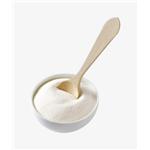 |
2024-04-24 | Ascorbic Acid
50-81-7
|
US $15.00-10.00 / kilograms | 1kilograms | 99% | 10000tons | Hebei Dangtong Import and export Co LTD | |
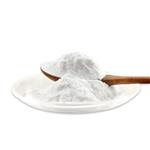 |
2024-04-24 | Ascorbic Acid
50-81-7
|
US $0.00 / KG | 1KG | 99% | 1000 | BLiT (Hefei)Chemical Co.,Ltd | |
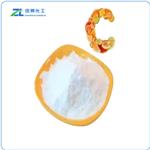 |
2024-04-23 | L(+)-Ascorbic acid
50-81-7
|
US $10.00 / kg | 1kg | 99% | 5000kg/Week | Hebei Zhuanglai Chemical Trading Co.,Ltd |
-

- Ascorbic Acid
50-81-7
- US $15.00-10.00 / kilograms
- 99%
- Hebei Dangtong Import and export Co LTD
-

- Ascorbic Acid
50-81-7
- US $0.00 / KG
- 99%
- BLiT (Hefei)Chemical Co.,Ltd
-

- L(+)-Ascorbic acid
50-81-7
- US $10.00 / kg
- 99%
- Hebei Zhuanglai Chemical Trading Co.,Ltd





